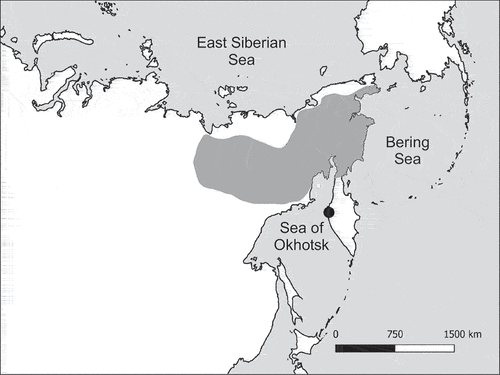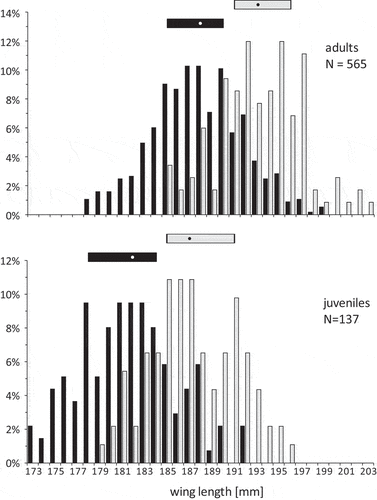Figures & data
Figure 1. Location of bird ringing site in the Khairusova-Belogolovaya estuary (black dot). Dark grey area indicates the breeding range of the Great Knot (according to Tomkovich Citation2021).

Figure 2. Distribution of the most dimorphic trait, the wing length, of males (black bars) and females (grey bars) of adult and juvenile Great Knots. The median (dot) and interquartile range (rectangle) are given above.

Figure 3. Relationship between the two most dimorphic traits, the wing length, against the bill length in male (black dots) and female (white dots) Great Knots. The ellipses show the 95% prediction intervals for a single observation, given the parameter estimates for the bivariate distribution computed from the data for males (solid line) and females (dashed line).

Table I. Differences in mean linear measurements between male and female Great Knots, with the sexual dimorphism index (SDI) expressed in per cent according to the modified Lovich and Gibbons (Citation1992) equation.
Table II. Age dimorphism index (ADI) in males and females of the Great Knot.
Table III. Equations for calculating discriminant scores. The percentage of birds correctly sexed is given according to squared mahalanobis distances from each sex-group centroid. WL – wing length, BL – bill length, THL – total head length.
